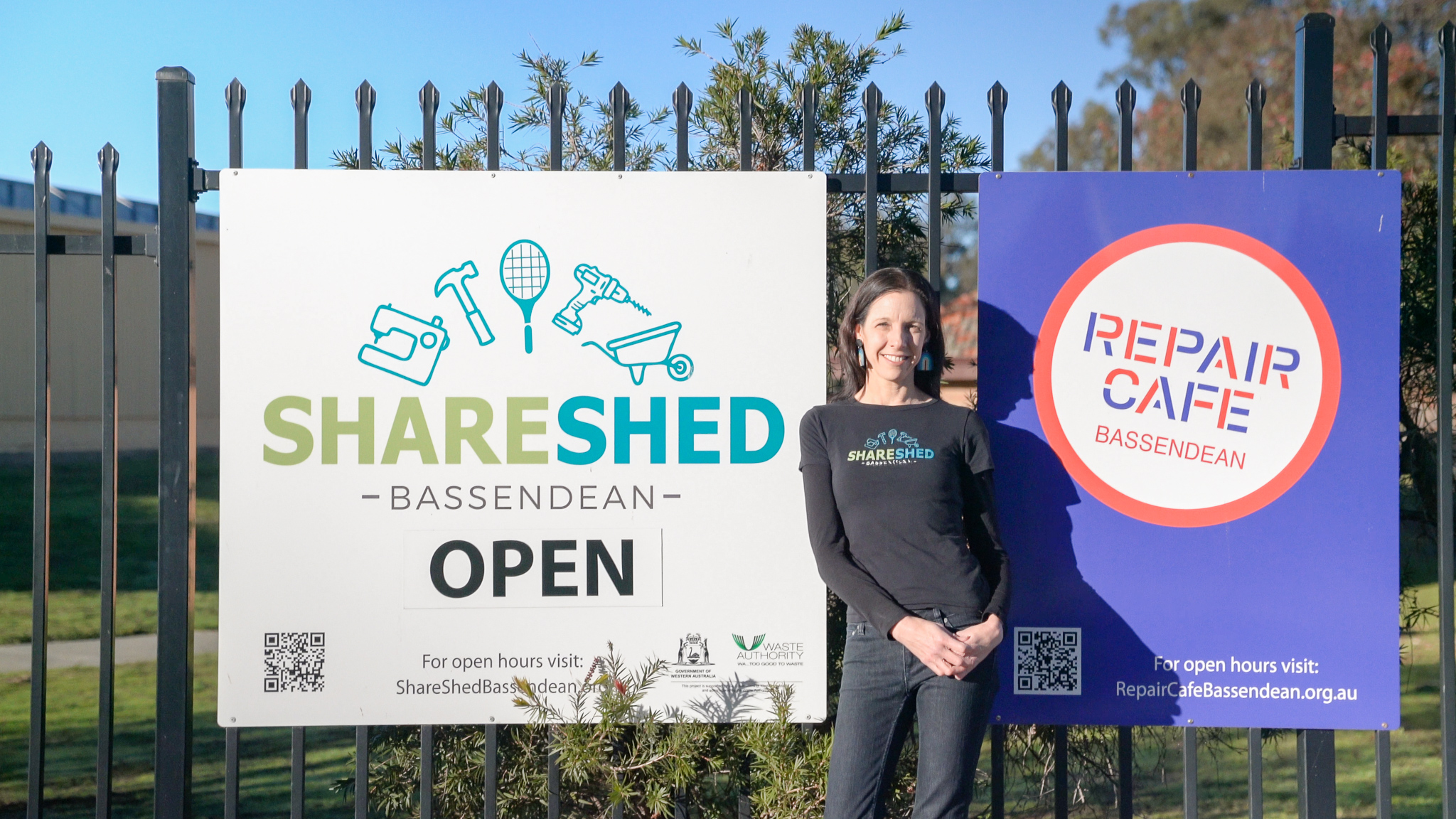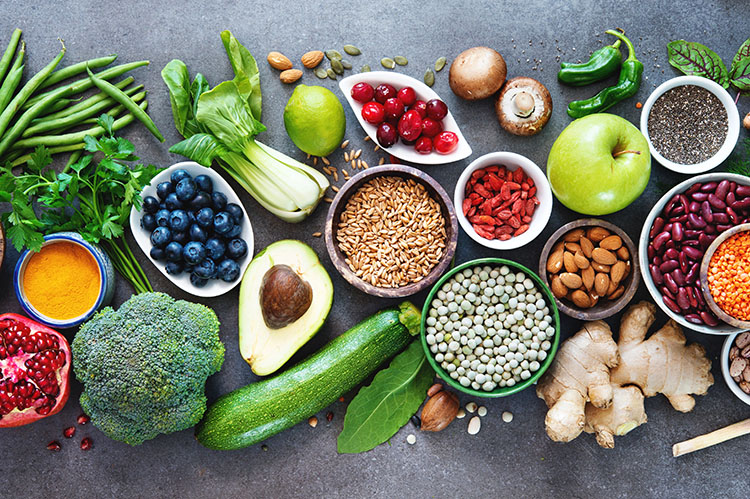
The Sharing Economy 101: Share Sheds
There are many items in people’s homes that sit unused for most of the year, such as a lawnmower, camping equipment, a pasta maker or even a smoke machine.
Posted on: July 13, 2020
Dude food is so 2018. Today it’s all about nude food. So what exactly is nude food? Well, it’s less to do with undressed salads and more about getting rid of excess packaging.

If you’re ready to embrace the nude food revolution, here are 5 tips to help you on your way.
Whether you’re shopping at a big name supermarket, local provedore, weekend farmers’ market or speciality food shop – say no to the excessive packaging. Okay, no-one wants to put an unwrapped chicken in their shopping basket, but there’s appropriately packaged – and then there’s over-packaged.
Do you really need to put your bananas in a plastic bag? Or do you have to have those zucchinis that have been put to bed on a plastic tray and tucked in with cling-wrap? And how about all those single-serve items you buy – yoghurt, chocolate bars or juice boxes? If you buy more than one, then you could probably buy a bigger size and divvy it up (it’ll save you money too).

Try swapping single-serve items for a large size that you can break into individual portions
If a small retailer is being a bit heavy-handed on the packaging – and can’t give you a really good reason why – ask them to consider cutting down. Hinting that you and others will buy more doesn’t harm your argument either!
Conversely, support those retailers that are moving away from excessive packaging – think butchers going back to wrapping meat in recycled brown paper and string, stall holders that encourage you to bring your own jars and containers to fill, shops offering bulk food, green-grocers that don’t cling-wrap whole produce, and stores with their own container exchange programs.
Packed lunches are great – they save you money and you know exactly what you’re eating. But they can be a big source of unnecessary packaging.
No matter if you’re packing up a lunch for yourself or the kids, get into the nude food mindset and reduce the amount of plastic that makes its way into the box – and into the bin!
The best low-waste lunchboxes are the ones with compartments to keep foods separate. If you don’t have a segmented lunch box, then try to pack everything in re-usable containers or wax wraps. Containers that keep foods cold or hot are also handy (remember the old Thermos – perfect for soup).
It’s important that the containers seal well – no-one finds a curled up sandwich or soggy roll appetizing!

Avoiding adding pre-packaged foods like biscuits, chips or snack bars to the lunchbox if you really want to embrace the nude. And remember to pack reusable cutlery – either take it from home or buy a reusable bamboo set so you’re always prepared. Ditto to single-use drink containers (like juice Tetra packs) – use a refillable bottle instead.
Partial to a choccie, protein bar, chippies or bickie? Do the nude – make your own snacks and treats.
When you make your own you not only save (money and the environment), you also know exactly what you are eating. Choose the right snack, and you also have the perfect nude food addition to your lunchbox (no need for any wrapping).

Switch up shop-bought treats for homemade ones
Why not make your own:
Chips – get a mandolin/slicer with the different attachments and create all kinds of fancy-shaped potato chips. You can also switch it up and use sweet potato, carrot, parsnip, kale or beetroot.
Crackers to have with dip, hummus or cheese – cut mountain/pita/Lebanese bread into triangles and bake in the oven until crisp. Change it up by sprinkling with cheese, seeds, nuts, dukkha or spices before baking. Or cut tortillas into wedges or strips and lightly toast in a pan until crisp.
Chocolate truffles – use your favourite chocolate, add the filling of your choice and roll them in coconut, crushed nuts, dehydrated berries, spice mix, cocoa powder or nibs.
Protein bars – combine all the nuts and dried fruits you love into a protein-packed snack.
Muesli/granola slice – bypass all the sugar in the pre-packed version and create your own healthier version full of seeds, nuts, fruits and oats, mixed with maple syrup.
Muffins – a bowl, a wooden spoon, some flour, sugar, egg, oil and the fruit, spice, cereal or chocolate chip of your choice and you’ve got all you need to make delicious muffins (oh, and a muffin tray and an oven!) in under 30 minutes. Cook’s treat: a warm muffin from the oven is a must for ‘quality control’ – they also keep for a few days in an airtight container and freeze well.
Biscuits – go plain or indulgent, cookies can be whipped up in a matter of minutes, last for a week and are robust enough to toss into the lunchbox without the need to ‘bag’.
No, you don’t have to get your kit off – get your workplace or kids’ school to join in the nude food movement.
October is even Nude Food Month so why not encourage your school to take part or challenge your workmates to go nude with their lunches (tie it to a fundraiser by ‘fining’ those who slip-up) or team morning teas (see who can create the best nude platter).

School lunches are a great place to start reducing waste
Realistically, not all the food you buy or make can be nude. So in addition to looking for foods with less packaging, make sure any packaging that is necessary is recyclable.
And then recycle what packaging there is correctly (know what can go in your recycling bin, and what belongs in the general waste bin)
Show us how you’re embracing the nude challenge by tagging us on Facebook (@WasteSortedWA) and Instagram (@wastesorted), use #wastesorted when you share photos or email us.

There are many items in people’s homes that sit unused for most of the year, such as a lawnmower, camping equipment, a pasta maker or even a smoke machine.

Say no to single-use plastic and needless packaging. Find out more ways you can cut down on your waste.

Here are some easy and fun ideas to help inspire everyone in your household to join in the waste revolution.